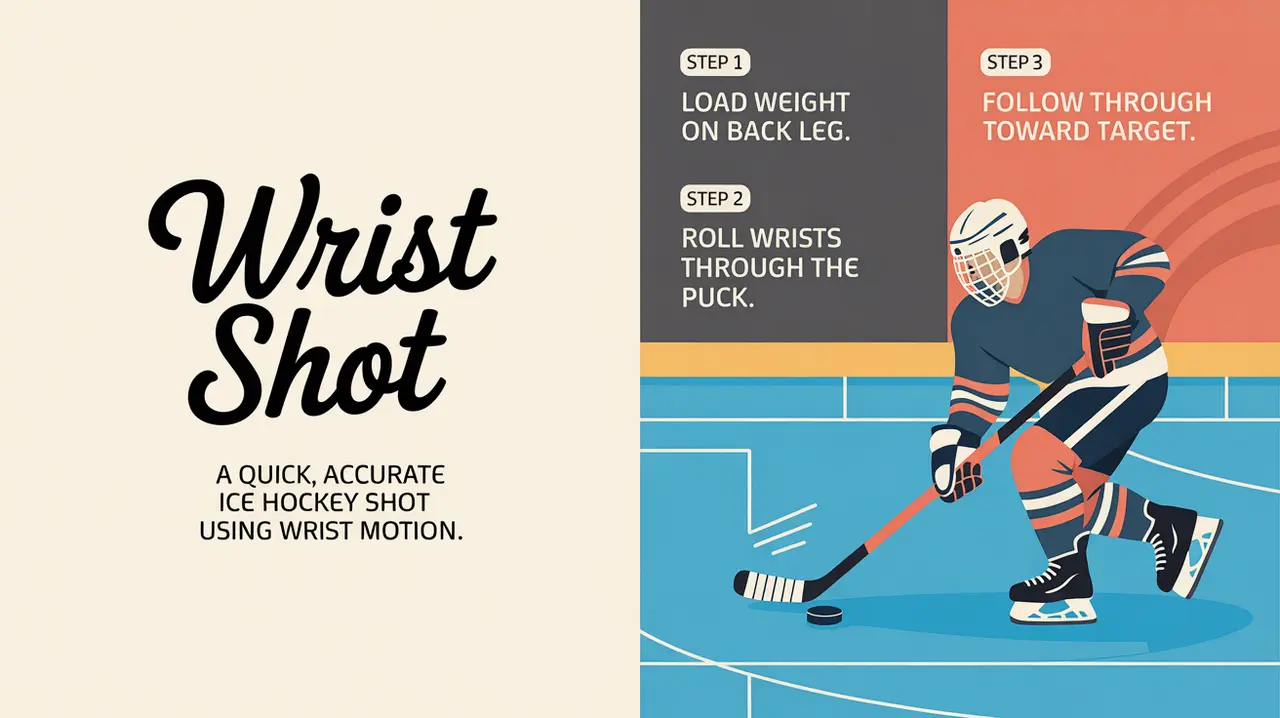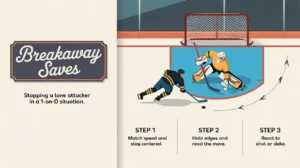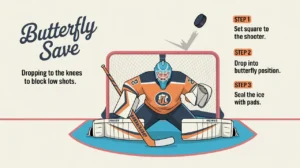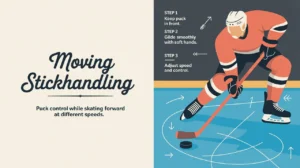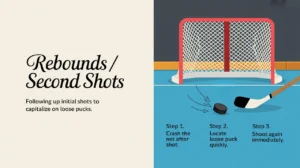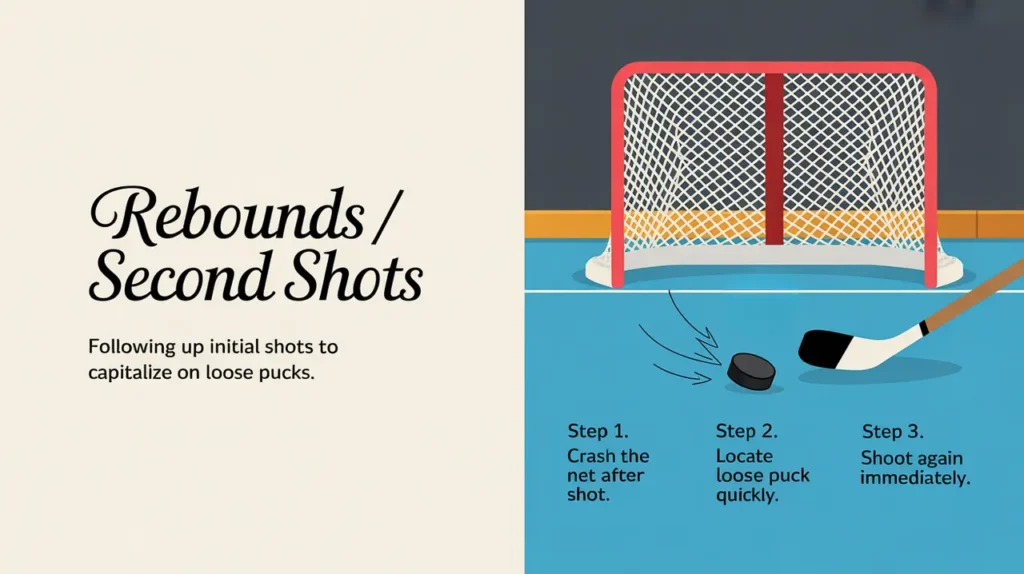Jim’s Intro to Wrist Shot
Hi folks, Jim here, the only commentator who once tried to demonstrate a wrist shot and somehow managed to hit the glass behind me.
What is a wrist shot?
A wrist shot is a shooting technique where a player uses a quick flicking motion of the wrists to propel the puck. It’s valued for its accuracy, quick release, and deceptive power, making it a go-to option in almost any situation.
How does it work?
The wrist shot relies on weight transfer, blade control, and follow-through:
- Puck Position: Start the puck slightly in front of your back foot.
- Weight Transfer: Shift weight from the back foot to the front to generate power.
- Blade Loading: Roll the puck along the blade to build tension.
- Wrist Flick: Snap the wrists quickly to release the puck with speed and spin.
- Follow Through: Point your blade at your target for accuracy.
- Head Up: Aim with your eyes before releasing, not while winding up.
How do you make good decisions with it?
- Pick Your Spot: Wrist shots excel when accuracy matters more than raw power.
- Use It in Motion: A quick release while skating can catch goalies off guard.
- Choose Angles Wisely: Wrist shots from the slot or off the rush are prime scoring chances.
- Deceive the Goalie: Subtle shoulder or eye fakes can open up shooting lanes.
- Know Your Stick Flex: Proper flex helps maximize power without overloading the shot.
How do you master it?
Mastering the wrist shot takes repetition, technique refinement, and shooting variety. Players practice stationary wrist shots first, then progress to shooting in stride and from different angles. Consistent mechanics build accuracy and confidence.
What does it look like when done right?
A great wrist shot looks smooth and effortless, with the puck flying off the blade in a tight, spinning trajectory and hitting the target with precision. Goalies often react a half-second too late.
Commentator’s Corner
Jim’s Take
A deadly wrist shot is like a well-aimed dart. You barely see it leave the blade before it’s lighting the lamp.
Parent Tip
Encourage proper technique over brute force. A clean release with good mechanics beats wild slappers every time.
Player Tip
Work on quick releases from different spots. The faster and cleaner your wrist shot, the harder it is to read.
A Final Thought
The wrist shot is the most versatile weapon in a player’s arsenal. Master it, and you’ll score from spots where others don’t even think to shoot.

